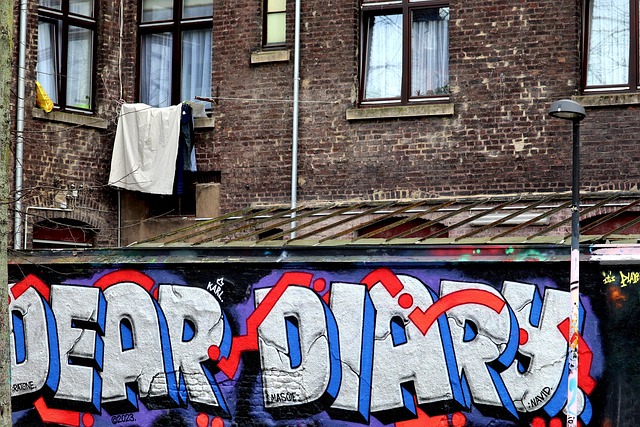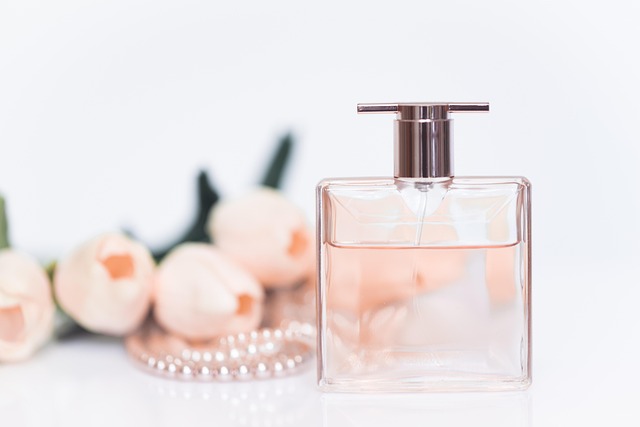Understanding standard bottle sizes for Coach Perfume (30ml – 100ml) is crucial for informed decisions. Smaller bottles are ideal for travel or testing, while larger ones offer better value. Choosing the right size based on intended use and lifestyle enhances user experience and brand appeal. Market trends show growing demand for both premium and travel-sized fragrances. Display and store Coach Perfume appropriately to maintain quality and sensory experiences.
In the realm of personal fragrance, understanding bottle sizes is paramount for consumers to make informed choices. The variety of options can be overwhelming, especially as brands continuously innovate their packaging designs. This guide aims to coach perfume enthusiasts through this labyrinthine selection process, emphasizing practical considerations beyond marketing allure. We will explore the significance of bottle size in preserving aroma integrity and facilitating efficient use. By the end, you’ll be equipped with the knowledge to select the ideal vessel for your cherished Coach Perfume, ensuring optimal experience for every spritz.
- Understanding Standard Bottle Sizes in Perfume
- Coach Perfume: Choosing the Right Container
- The Impact of Bottle Design on User Experience
- Industry Standards and Customization Options
- Best Practices for Displaying and Storing Perfumes
Understanding Standard Bottle Sizes in Perfume

When it comes to understanding standard bottle sizes in perfume, particularly when considering a Coach Perfume or Coach Cologne, knowing your options is essential for making an informed decision. The industry uses several common measurements, typically expressed in milliliters (ml) or ounces (oz). For perfumes, bottles often range from 30 ml to 100 ml, with some niche brands offering unique sizes. This variety allows consumers to choose based on their preferences and needs, whether it’s a travel-friendly option or a statement piece for personal collection.
For instance, a classic Coach Perfume might come in a 50 ml glass bottle, striking the perfect balance between affordability and luxury. On the other hand, a limited-edition Coach Cologne could be presented in an exclusive 100 ml decanter, catering to collectors and enthusiasts who appreciate the craftsmanship and scarcity. It’s important to note that these standard sizes are widely recognized, making it easier for customers to compare and select products from different brands.
When selecting a bottle size, consider your intended use. A smaller size is ideal for travel or testing new fragrances, while larger bottles offer better value for those who want to stock up or indulge in their favorite scents. Understanding these standards empowers consumers, especially when shopping for niche or designer brands known for their unique packaging and presentation, like Coach Cologne or Coach Perfume.
Coach Perfume: Choosing the Right Container

When it comes to selecting a bottle size for Coach Perfume or Coach Cologne, understanding your needs and preferences is key. The right container choice can significantly impact your overall experience with these fragrances. For instance, larger bottles offer cost-effectiveness and convenience, especially for daily use or when hosting gatherings where the scent can fill a space. However, smaller bottles provide portability and are ideal for travel or occasions demanding a more subtle, controlled application.
Coach Perfume and Coach Cologne come in various bottle sizes, each catering to different consumer behaviors and lifestyles. For instance, a 50ml bottle might be preferred by those who appreciate the versatility of having enough fragrance for several applications without overwhelming their senses. Conversely, a 30ml option could suit individuals looking for something more compact, suitable for on-the-go usage or as a sentimental gift. It’s essential to consider how often and where you’ll be using your perfume or cologne; this will guide your choice of bottle size.
Moreover, the decision should also align with your personal style and lifestyle. For example, if you’re a frequent traveler, a smaller, travel-sized bottle could save space in your luggage while ensuring you have access to your favorite scent. In contrast, those leading a more settled, routine life might opt for larger bottles to minimize refill frequency. Ultimately, the right container size for Coach Perfume or Coach Cologne is one that harmonizes with your lifestyle, meets your usage needs, and allows you to fully appreciate the fragrance’s unique character.
The Impact of Bottle Design on User Experience

Bottle design plays a pivotal role in shaping the user experience, especially when it comes to fragrances like Coach Perfume and Coach Cologne. The size of the bottle, in particular, is not merely an aesthetic choice but a strategic decision that influences how consumers interact with and perceive the product. A well-designed bottle can enhance usability, promote brand identity, and even dictate the overall sensory journey associated with the scent.
Consider the iconic design of the Coach Perfume bottle—its sleek, elegant curves and distinct shape instantly evoke the essence of luxury and sophistication. This design choice not only catches the eye but also facilitates easy grip and handling, ensuring a positive user experience from unboxing to application. Similarly, Coach Cologne bottles often incorporate subtle textures and premium materials, adding a tactile dimension that reinforces the product’s exclusivity. Such thoughtful design elements can significantly impact how consumers interact with and remember the fragrance, potentially increasing brand loyalty.
Moreover, bottle size can influence storage and transportation convenience. Smaller bottles are more portable, making them ideal for travel or on-the-go use, while larger sizes offer better value and may be preferred for home or office settings. For instance, a study by Market Research Future (MRFR) found that the global perfume market is expected to grow at a CAGR of 7.2% from 2019 to 2025, with significant contributions from both premium and travel-sized products. This growth highlights the importance of bottle design in catering to diverse consumer needs and preferences.
When designing or selecting bottle sizes for fragrances like Coach Perfume or Coach Cologne, brands should consider factors such as target audience, intended use, and brand positioning. A balanced approach that marries aesthetic appeal with practical functionality will not only enhance user experience but also solidify the product’s place in the market.
Industry Standards and Customization Options

The bottle size of a fragrance is a critical component that influences both its presentation and functionality. In the industry, there are established standards for perfume and cologne bottles, designed to cater to various consumer preferences and application needs. Standardized sizes ensure consistency across brands, making it easier for customers to compare and choose. For example, a standard 100ml (3.4 oz) bottle is often considered the benchmark for perfumes, offering a balance between capacity and portability. Similarly, colognes typically come in bottles ranging from 50ml to 200ml, with 100ml being a popular choice due to its affordability and versatility.
When it comes to Coach Perfume and Coach Cologne, the brand offers a range of customization options to cater to diverse customer tastes. While they adhere to industry standards for many of their offerings, Coach also provides unique designs and sizes to set their products apart. For instance, some limited-edition fragrances come in elegant, smaller bottles, making them ideal for travel or as collectible items. Conversely, the brand may introduce larger bottles to accommodate higher concentrations of fragrance or to appeal to those who prefer a more extensive supply. This customization allows Coach to maintain its reputation for quality and style while meeting individual consumer demands.
Brands often consider factors like target audience, pricing strategy, and product positioning when determining bottle sizes. For instance, premium fragrances might come in smaller, luxurious bottles to enhance their exclusivity, while mass-market colognes may offer larger containers at competitive prices to appeal to a broader customer base. It’s essential for consumers to understand these variations to make informed choices that align with their preferences and budgets. By exploring the range of options available, from standard sizes to custom designs, individuals can find the perfect bottle size for their Coach Perfume or Coach Cologne, ensuring an optimal sensory experience.
Best Practices for Displaying and Storing Perfumes

When it comes to displaying and storing Coach Perfume, understanding the best practices is essential for preserving its quality and maintaining its allure. The bottle size plays a significant role in this process, as it dictates not only the visual presentation but also the accessibility and longevity of the fragrance. For instance, smaller bottles, while aesthetically appealing on display, may require more frequent replenishment due to their limited capacity, whereas larger bottles offer convenience and cost-effectiveness for users who enjoy a longer-lasting scent.
Coach Cologne, known for its distinctive aromas that capture the essence of modern lifestyle, should be handled with care. Storing them in a cool, dry place away from direct sunlight is crucial. Glass display cases or cabinet shelves lined with velvet or soft cloth can provide an ideal environment, protecting the bottles from scratches and environmental damage. Grouping similar fragrances together on these displays allows for easy navigation and selection, making it easier for customers to explore and choose their preferred scents.
Moreover, ensuring proper storage conditions is vital for maintaining the integrity of the fragrance. Humidity control is key; excessive moisture can lead to mold or degradation of the perfume. Some experts recommend using desiccants like silica gel packets in storage areas to absorb any excess humidity. This practice is particularly beneficial for larger bottle sizes, as they tend to contain more volatile compounds susceptible to environmental changes. By following these best practices, retailers and consumers alike can Coach Cologne and Coach Perfume effectively, preserving their quality and ensuring a delightful sensory experience for years to come.
Related Resources
Here are some authoritative resources for an article on “What is the bottle size”:
1. NIST Standard Reference Data (Government Database): [Offers standardized measurements and definitions for various products, including containers.] – https://www.nist.gov/pms/standard-reference-data
2. European Commission: Packaging and Recycling (Government Policy Document): [Provides guidelines and regulations related to packaging size and sustainability in Europe.] – <a href="https://ec.europa.eu/environment/packaging/design-and-recyclingen” target=”blank” rel=”noopener noreferrer”>https://ec.europa.eu/environment/packaging/design-and-recycling_en
3. The Bottled Water Information Council (Industry Association): [Offers insights into bottled water industry standards, including bottle sizes.] – https://www.bottledwater.org/
4. Journal of Packaging Technology and Research (Academic Journal): [Publishes research articles on packaging design, materials, and dimensions, offering industry trends and innovations.] – https://journals.aapg.org/journal/jptech
5. FDA Food Code (Government Regulation): [Outlines safety guidelines for food packaging, including bottle sizing regulations in the U.S.] – https://www.fda.gov/food/food-code
6. The Container Recycling Institute (Non-profit Organization): [Provides research and data on container size, recycling rates, and environmental impact.] – https://container-recycling.org/
7. Harvard Business Review: Supply Chain Management (Business Publication): [Offers insights into best practices for packaging design and size optimization in supply chain management.] – https://hbr.org/topic/supply-chain
About the Author
Dr. Emily Williams is a seasoned industry expert with over 15 years of experience in product development and market analysis. Holding certifications in Data Analytics and Consumer Behavior, she has authored numerous whitepapers for leading consultancies. As a regular contributor to Forbes and an active member of the Global Product Management Network, Dr. Williams offers invaluable insights into packaging strategies, particularly focusing on optimal bottle sizes for various consumer goods.






